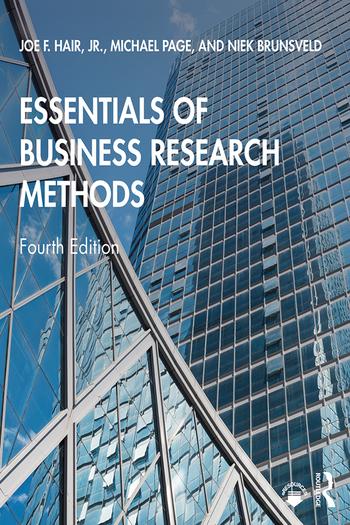Question
Read the following about Booker T. Washington and W.E.B. Du Bois: -------------------------------------------------------------------------------------------------------------------------------------Booker T. Washington's philosophy has been described as promoting racial accommodation and gradualism. In
Read the following about Booker T. Washington and W.E.B. Du Bois:
-------------------------------------------------------------------------------------------------------------------------------------Booker T. Washington's philosophy has been described as promoting racial accommodation and gradualism. In other words, his path forward for African-Americans was designed not to rock the proverbial boat of race relations. It argued for the gradual development of the black workforce until they could hold their own in the new economic and social landscape. His philosophy was built on the principle of hard work bringing success.
Booker T. Washington used several metaphors in his speech. A metaphor compares one thing to another. While clichs like "You are a gem," are simple metaphors used frequently to convey something such as, in this example, the rarity/value/preciousness of a person, metaphors can also clarify and make memorable complex concepts.
In this lesson, we will focus on Washington's metaphors of the hand, the ladder, and the bucket. These three simple items represent significant principles in his philosophy of race relations and the economic prospects for African-Americans.
The Hand
Washington argued that just as each finger is separate, but a whole hand works as a unit, so could the races maintain social separateness and function in a single complete economy. This principle suggested that he did not seek integration through assimilation, but rather that segregation was acceptable so long as each race was treated equally. The year after this speech, in 1896, the Supreme Court ruled in Plessy v. Ferguson that segregation on the principle of separate but equal was Constitutional.
The Ladder
Booker T. Washington believed that African-Americans needed to start where they were. In other words, learning farming, carpentry, building, and other manual trades rather than studying classic British literature and other such subjects. His work at Tuskegee put this philosophy into practice. He believed that African-Americans could climb the social and economic ladder one rung at a time, but that it would be ridiculous to assume one could begin at the ground, skip the rungs and hard work, and end up at the top. His metaphor of the ladder engaged the protestant work ethic that good things come through hard work.
The Bucket
Booker T. Washington's plea for businesses and employers to "cast down their bucket," where they were was a call for hiring African-Americans on farms and emerging industries in the South. It was also a call against hiring immigrants in place of African-Americans.
-----------------------------------------------------------------------------------------------------------------------------------------
W. E. B. Du Bois believed in the importance of higher education. He was concerned with blacks becoming lawyers, doctors, and businessmen. If blacks were to be equal with whites, they needed equal opportunity and to be fully socially integrated. This meant demanding civil rights so they could exercise political power and exist in society on a par with their white counterparts. He believed that part of the problem was that without an educated "talented tenth" of the African-American population, blacks would never be able to excel.
Three Paradoxes: Critiques of Booker T. Washington
Du Bois articulates three paradoxes or apparently irresolvable contradictions in Washington's philosophy writing:
- Washington is striving nobly to make Negro artisans business men and property-owners; but it is utterly impossible, under modern competitive methods, for workingmen and property-owners to defend their rights and exist without the right of suffrage.
- Washington insists on thrift and self-respect, but at the same time counsels a silent submission to civic inferiority such as is bound to sap the manhood of any race in the long run.
- Washington advocates common-school and industrial training and depreciates institutions of higher learning. Yet neither the Negro common-schools- nor Tuskegee itself- could remain open a day were it not for teachers trained in Negro colleges or trained by their graduates.
Du Bois joins the critics of Washington in calling for the vote, civic equality, and education according to ability as the antidotes to resolve the problems caused by Washington's path.
In critiquing Washington, Du Bois is careful to acknowledge the good that Washington has done, and in places, attempts to provide an explanation as to why Washington may have made the choices he did. However, he also enumerates specific propositions that Washington's philosophy implies and is critical of those premises.
Du Bois proposes three additional premises for understanding race relations and emphasizes the last: "while it is a great truth to say that the Negro must strive and strive mightily to help himself, it is equally true that unless his striving be not simply seconded, but rather aroused and encouraged, by the initiative of the richer and wiser environing group, he cannot hope for great success."
Du Bois emphasizes that it falls to whites as much as to blacks to improve the condition of blacks in America.
----------------------------------------------------------------------------------------------------------------------------------------
Then answer the following:
Why would both blacks and whites find Booker T. Washington and W.E.B. Du Bois persuasive? What, in Washington's message and public persona would be attractive to newly free African-Americans? Are those elements the same or different from the elements that whites found appealing? How about W.E.B. Du Bois's philosophy? What would either race find troubling in these philosophies?
Step by Step Solution
There are 3 Steps involved in it
Step: 1

Get Instant Access to Expert-Tailored Solutions
See step-by-step solutions with expert insights and AI powered tools for academic success
Step: 2

Step: 3

Ace Your Homework with AI
Get the answers you need in no time with our AI-driven, step-by-step assistance
Get Started


